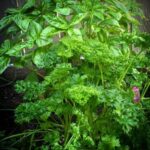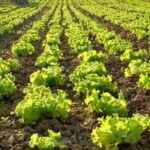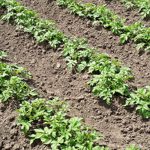Are frogs good for vegetable gardens? Wildlife plays a crucial role in the health and productivity of gardens, and frogs are no exception. In fact, frogs can be incredibly beneficial to vegetable gardens, contributing to a healthy ecosystem and natural pest control. In this article, we will explore the specific benefits of having frogs in your garden, how to create a frog-friendly environment, their role in pest control, and the potential challenges as well as conservation efforts.
Frogs play an important role in maintaining the balance of garden ecosystems. Their presence contributes to a thriving environment that supports the growth of vegetables and other plants. By focusing on their specific contribution to vegetable gardens, we can gain a deeper understanding of the impact they have on overall garden health.
In addition to discussing the importance of wildlife in gardens in general, this article will highlight the unique benefits that frogs bring to vegetable gardens. By exploring the positive impact frogs have within garden ecosystems and their ability to naturally control pests, we can gain insights into how these amphibians can enhance the success of vegetable gardening.
Benefits of Frogs in Vegetable Gardens
Frogs are an essential part of a healthy garden ecosystem, especially in vegetable gardens. Their presence contributes to natural pest control and indicates the overall health of the garden. Here are some benefits of having frogs in vegetable gardens:
1. Natural Pest Control: Frogs feed on a variety of garden pests such as insects, slugs, and snails. This helps to naturally control pest populations without the need for chemical pesticides that can harm other beneficial wildlife.
2. Ecosystem Health: The presence of frogs in vegetable gardens indicates a balanced and healthy ecosystem. Their presence is a sign of clean water and suitable habitat for other beneficial wildlife, indicating a thriving environment for plants to grow.
3. Biodiversity: Frogs add to the overall biodiversity of the garden, contributing to a more resilient and sustainable ecosystem. Their role as predators helps maintain a balanced population of insects and other pests, promoting a healthier garden environment.
To create a welcoming environment for frogs in vegetable gardens, consider implementing the following tips:
– Provide water sources such as ponds or small containers with clean water for frogs to breed and thrive.
– Incorporate native plants that attract insects and provide shelter for frogs.
– Minimize pesticide use to avoid harming frogs and their food sources.
By creating a frog-friendly garden, you can harness the benefits of these amphibians while maintaining a healthy and productive vegetable garden ecosystem.
Frog-Friendly Gardens
Creating a garden environment that is inviting to frogs is not only beneficial for the amphibians but also for the overall health of the garden. By incorporating frog-friendly elements into your vegetable garden, you can help support a thriving ecosystem and natural pest control.
Tips for Attracting Frogs
One of the most important steps in creating a frog-friendly garden is to provide suitable habitats for these amphibians. This includes incorporating plants that provide cover and shade, such as dense shrubs and ground cover. Additionally, incorporating water features like ponds or shallow dishes can provide frogs with a source of hydration and breeding grounds. It’s important to avoid using chemical pesticides and herbicides in your garden, as these can be harmful to frogs and other wildlife.
Choosing Plants for Frog-Friendly Gardens
Certain types of plants are particularly attractive to frogs due to their ability to provide shelter, shade, and food sources. Native plants are often best suited for supporting local frog populations, as they have evolved alongside native wildlife. Some examples of frog-friendly plants include ferns, hostas, elephant ears, and mosses. These plants provide ample ground cover and moist environments that are favorable to frogs.
Managing Water Features
Incorporating water features into your garden can be an effective way to attract frogs, but it’s important to manage these features properly. Ensure that any ponds or water sources have shallow areas where frogs can access the water easily. Adding aquatic plants like lilies and floating vegetation can also enhance the attractiveness of these features to frogs. Regular maintenance of water features is essential to prevent stagnation and mosquito breeding while keeping them appealing to frogs.
By taking these steps to create a welcoming environment for frogs in your vegetable garden, you can promote a healthy ecosystem while benefiting from natural pest control methods without relying on potentially harmful chemicals.
The Role of Frogs in Pest Control
Frogs play a crucial role in maintaining a healthy and thriving vegetable garden, especially when it comes to pest control. These amphibious creatures are natural predators to many common garden pests, making them valuable allies to gardeners. By preying on insects such as slugs, snails, mosquitoes, and flies, frogs help keep the pest population in check without the need for harmful chemical pesticides.
One of the main benefits of having frogs in vegetable gardens is their voracious appetite for insects. A single frog can consume a large number of pests in a day, helping to protect your plants from potential damage. This natural form of pest control not only benefits the garden but also reduces the reliance on chemical pesticides that can be harmful to the environment and other beneficial wildlife.
In fact, studies have shown that gardens with healthy frog populations experience lower levels of insect damage compared to those without frogs. This highlights the significant impact that these amphibians have on pest management within vegetable gardens. By creating a welcoming environment for frogs, gardeners can harness their natural pest control abilities and promote a more sustainable and eco-friendly approach to gardening.
| Benefit | Effect |
|---|---|
| Natural Pest Control | Frogs reduce the need for chemical pesticides |
| Lower Insect Damage | Gardens with frogs experience less insect damage |
Frogs as Indicators of Garden Health
Frogs play a crucial role in indicating the health of garden ecosystems. Their presence is a strong indicator of a balanced and thriving environment. When frogs are present in vegetable gardens, it signifies that the surrounding ecosystem is able to support a variety of wildlife, contributing to the overall health and biodiversity of the area.
The Role of Frogs as Indicators
Frogs are sensitive creatures, and their presence or absence can provide valuable insight into the environmental conditions of a garden. The abundance of frogs can indicate the availability of food sources, such as insects and other small invertebrates, which suggests a healthy ecosystem. Additionally, frogs require clean water for breeding and survival, so their presence also signals good water quality in the garden.
Monitoring Frog Populations
By monitoring frog populations in vegetable gardens, gardeners can gain important information about the overall health of their garden ecosystems. An increase in frog numbers may indicate that conservation efforts or management practices within the garden are successful, while a decline in frog populations could signal potential issues that need to be addressed.
Creating an Ideal Habitat for Frogs
Establishing a frog-friendly environment within vegetable gardens can help attract these amphibians and support their populations. Providing habitat features such as natural water sources like ponds or wetland areas and incorporating native plants can create an ideal setting for frogs. Avoiding pesticide use and creating diverse plantings can also contribute to a healthier environment for frogs within the garden.
The presence of frogs not only adds to the biological diversity of vegetable gardens but also serves as an indication of its overall health and balance. By creating welcoming habitats for these amphibians, gardeners can contribute to both conservation efforts and the success of their vegetable gardens.
Potential Challenges of Having Frogs in Vegetable Gardens
Frogs are indeed good for vegetable gardens, as they play a crucial role in maintaining a healthy garden ecosystem. However, there can be potential challenges associated with having frogs in gardens that gardeners should be aware of.
One possible challenge is the competition between frogs and humans for certain types of insects and pests in the garden. While frogs are beneficial for controlling pests naturally, some gardeners may worry about whether they will have enough insects left to feed their frog population.
Another potential challenge of having frogs in vegetable gardens is the risk of overpopulation. If the garden provides an ideal environment for frogs, they may reproduce rapidly, leading to an overcrowding of frog populations. This can result in increased competition among the frogs themselves and potentially lead to imbalances in the garden ecosystem.
Furthermore, there is also the concern of disease transmission from frogs to humans or other animals. While it’s relatively uncommon, some species of frogs can carry diseases such as salmonella. It’s essential for gardeners to take precautions when handling frogs or coming into contact with areas where they reside.
Overall, while there are potential challenges associated with having frogs in vegetable gardens, they can generally be addressed with proper planning and management techniques. By understanding these challenges and taking proactive measures, gardeners can create a balanced and thriving ecosystem that includes beneficial frog populations.
| Potential Challenges | Addressing Strategies |
|---|---|
| Competition for insects with humans | Diversify plantings to ensure insect variety; Use companion planting to protect vulnerable vegetables |
| Overpopulation of frog populations | Create diverse habitats within the garden; Introduce natural predators like snakes or birds |
| Risk of disease transmission | Wear gloves when gardening; Wash hands thoroughly after handling plants or soil where frogs reside |
Encouraging Frog Conservation in Gardens
Frogs are incredibly beneficial for vegetable gardens, as they play a crucial role in maintaining a balanced and healthy ecosystem. By encouraging frog conservation in gardens, gardeners can not only support these important creatures but also improve the overall health and productivity of their vegetable gardens.
There are several ways to encourage frog conservation in gardens, including:
- Creating frog-friendly habitats: Gardeners can create spaces within their gardens that are welcoming to frogs by incorporating elements such as ponds, water features, and dense vegetation. These areas provide shelter and breeding grounds for frogs.
- Avoiding chemical pesticides: Using natural and organic pest control methods instead of chemical pesticides can help protect frogs from harmful toxins. By reducing the use of harmful chemicals, gardeners can create a safer environment for frogs to thrive.
- Supporting frog conservation efforts: Getting involved in local conservation initiatives and organizations dedicated to protecting frog populations can have a positive impact on the broader environment. By supporting and participating in efforts to conserve frogs, gardeners can contribute to the preservation of these valuable creatures.
By taking these steps to encourage frog conservation in gardens, gardeners can contribute to the health and vitality of their vegetable gardens while also supporting the broader goal of maintaining healthy ecosystems for wildlife.
Additionally, creating a welcoming environment for frogs can also enhance the overall biodiversity and resilience of vegetable gardens. As natural pest controllers, frogs play a vital role in keeping pest populations in check without the need for harmful chemical interventions. Encouraging frog conservation is not only beneficial for gardeners but also for the larger ecosystem as a whole.
Conclusion
In conclusion, it is clear that frogs are indeed good for vegetable gardens. Their presence in garden ecosystems contributes to natural pest control and serves as an indicator of a healthy environment. By creating a frog-friendly garden with appropriate plants and water features, gardeners can attract these beneficial amphibians and support their conservation efforts.
While the benefits of having frogs in vegetable gardens are significant, it is important to recognize the potential challenges that may arise. Some gardeners may encounter issues such as the overpopulation of frogs or possible damage to crops. However, by implementing solutions and alternatives, such as adjusting garden design or using protective measures for crops, these challenges can be effectively addressed.
Ultimately, finding a balance between frog conservation and successful vegetable gardening practices is key. It is possible to coexist with frogs in the garden while reaping the benefits they bring to the ecosystem. By understanding their role in pest control and maintaining a healthy environment for them, gardeners can create thriving vegetable gardens that are not only productive but also contribute to the conservation of local frog populations.
Frequently Asked Questions
What Does It Mean When You Have a Lot of Frogs in Your Yard?
Having a lot of frogs in your yard can mean that the environment is healthy and suitable for them. This indicates that there is ample food and water, which attracts these amphibians to your yard.
Do Frogs Eat Your Plants?
Generally, frogs do not eat plants. They mainly feed on insects, worms, and other small invertebrates. However, some species of frogs may accidentally damage plants while hunting for their prey. Overall, they are not major threats to your garden.
Are Frogs Beneficial?
Frogs are indeed beneficial to the ecosystem. They help control insect populations by feeding on pests like mosquitoes, flies, and moths. Additionally, they serve as a food source for larger animals and birds. Their presence indicates a balanced and thriving ecosystem within your yard.

If you’re looking to get into vegetable gardening, or are just looking for some tips on how to make your current garden better, then you’ve come to the right place! My name is Ethel and I have been gardening for years. In this blog, I’m going to share with you some of my best tips on how to create a successful vegetable garden.





